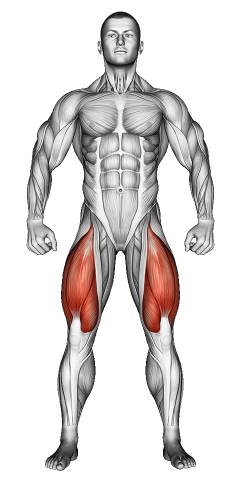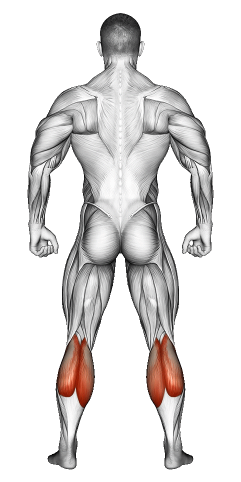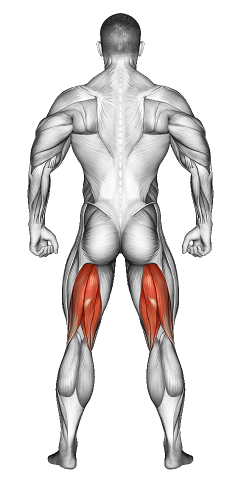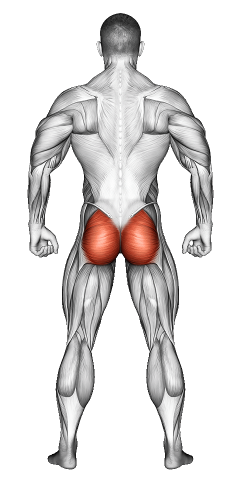Running in Place: Video Tutorial & Exercise Guide

Written By: Claude Michael
Updated: Jan 14, 2025
| Workout | Running in Place |
| Primary Muscle Group | Quads |
| Secondary Muscle Group | Calves, Hamstrings, , Glutes |
| Equipment Required | None |
| Force Type | Bodyweight |
| Mechanics | Cardio |
| Exercise Type | Cardio |
| Difficulty | Beginner |
Running in Place: Video Tutorial & Exercise Guide
- 1.Running in Place: Muscle Groups
- -1.1Primary Muscle Group
- -1.2Secondary Muscle Group
- 2.Running in Place: Step-by-Step Guide
- 3.Running in Place: Overview
- 4.Running in Place: Benefits
- 5.Running in Place: Pro Tips & Advanced Techniques
- 6.Running in Place: Progression Plan
- 7.Running in Place: Frequently Asked Questions (FAQs)
Secondary Muscles Group
Running in Place: Step-by-Step Guide
- Step 1: Stand tall with your feet hip-width apart and keep your arms relaxed by your sides. Start with a strong posture, head up, and core tight. This helps you stay balanced and ready to move.
- Step 2: Begin by lifting one knee up toward hip level while the opposite arm swings forward naturally. Then quickly switch legs, lifting the other knee as your opposite arm swings forward. Move at a comfortable pace to get your rhythm going.
- Step 3: Pick up the speed, staying light on your feet. Keep your knees coming up to at least hip level and swing your arms to help with momentum. Imagine you’re running on the spot, pushing through with energy in each step.
- Step 4: Focus on a steady pace and breathe deeply. Inhale as you lift each knee, and exhale as you bring it back down. Let your arms move naturally—this keeps your rhythm smooth and helps you keep going longer.
- Step 5: Keep going, aiming for your set time or reps. Stay strong, keep your pace steady, and enjoy the boost in energy. You’re doing great! Running in place keeps you moving and raises your heart rate fast.
Running in Place: Overview
Running in place is a simple yet powerful cardio move that helps you increase your heart rate, strengthen your legs, and engage your core. It’s perfect for when you need a quick burst of cardio, a warm-up, or a way to break up your workout routine. This move works well for all fitness levels, making it easy to adjust to your needs.
Running in Place: Benefits
Running in place strengthens your legs, improves your cardiovascular health, and boosts your endurance. This exercise burns calories quickly, activates your core, and provides an easy way to stay active indoors or outdoors. Running in place adds energy to any routine, keeping your heart rate up and your muscles engaged.
Running in Place: Pro Tips & Advanced Techniques
- Stay Light on Your Feet: Keep a slight bend in your knees and stay light to protect your joints and keep your movements smooth.
- Engage Your Core: Tighten your core as you run, which helps you stay balanced and supports your lower back.
- Increase Speed Gradually: Start at a moderate pace, then increase your speed as you get comfortable. Focus on keeping your form strong.
- Control Your Breathing: Inhale and exhale deeply with each knee lift to stay steady and avoid tiring out too quickly.
Running in Place: Progression Plan
Beginner
Intermediate
Advanced
Running in Place: Frequently Asked Questions (FAQs)
What muscles does Running in Place work?
+Running in place targets your legs, especially your calves and thighs, and activates your core.
Can I add Running in Place to any workout?
+Yes! Running in place is great for warm-ups, cardio sessions, or as a quick energy boost.
How does Running in Place improve cardiovascular health?
+Running in place quickly raises your heart rate, which helps improve cardiovascular endurance and stamina.
Can Running in Place help with weight loss?
+Absolutely. Running in place burns calories fast, helping you reach your weight loss goals when done consistently.
How often should I do Running in Place?
+Add running in place 2-3 times a week as part of your cardio or circuit workout.
What mistakes should I avoid?
+Avoid heavy stomping. Stay light on your feet to protect your joints. Keep your posture tall, core tight, and focus on smooth, controlled movements.
Share
Don’t Wish for It, Work for It – Join the FlexXP Newsletter Today!
Thank you for signing up for the FlexXP Newsletter!
This site is protected and the Google Privacy Policy and Terms of Service apply.



